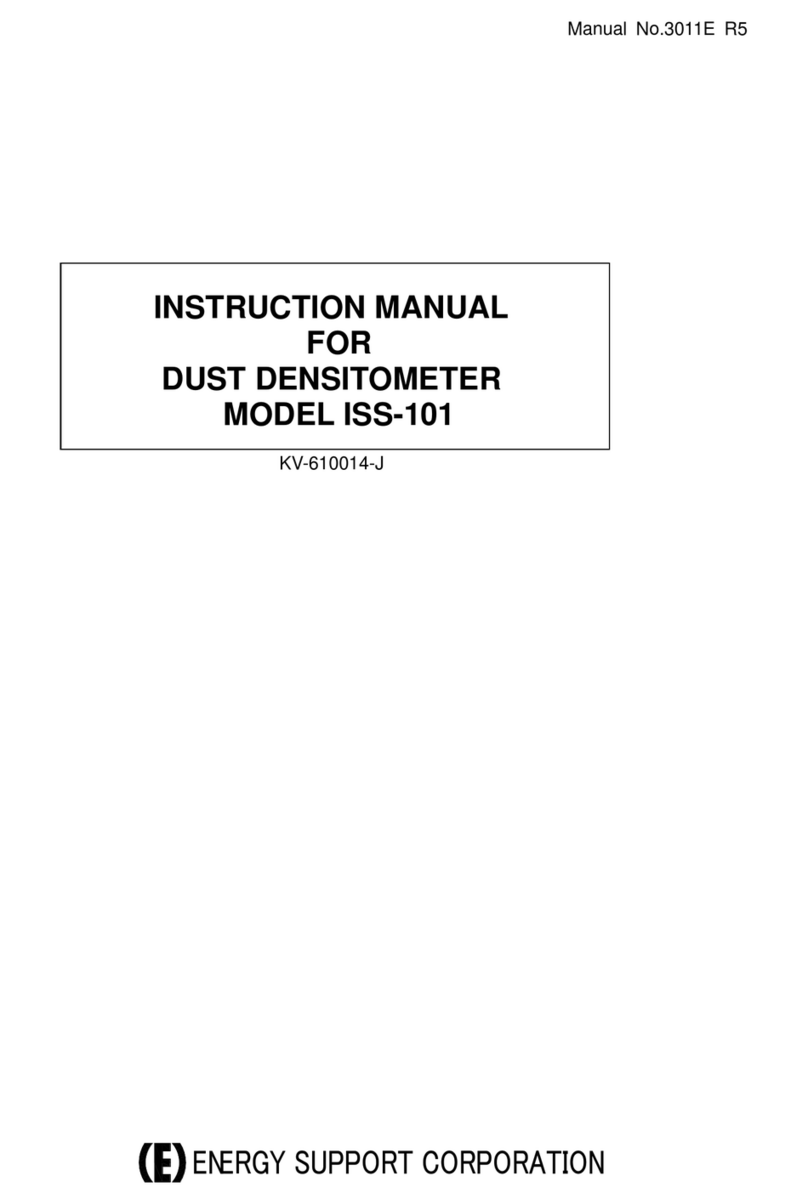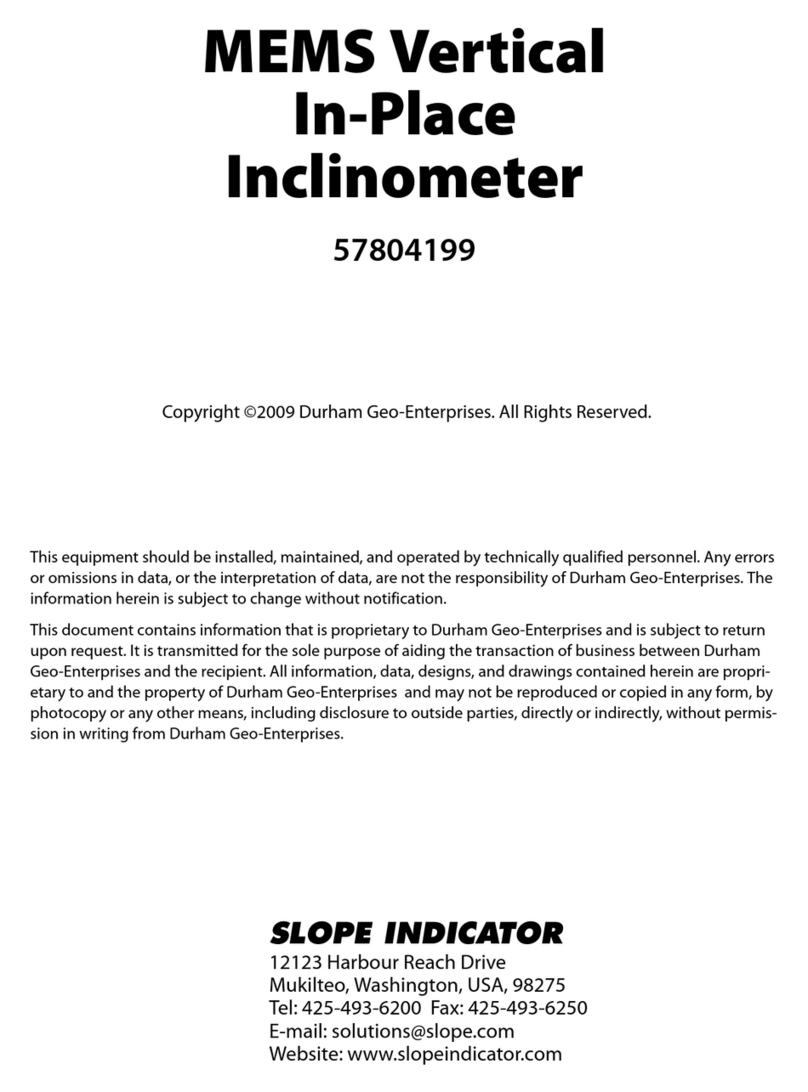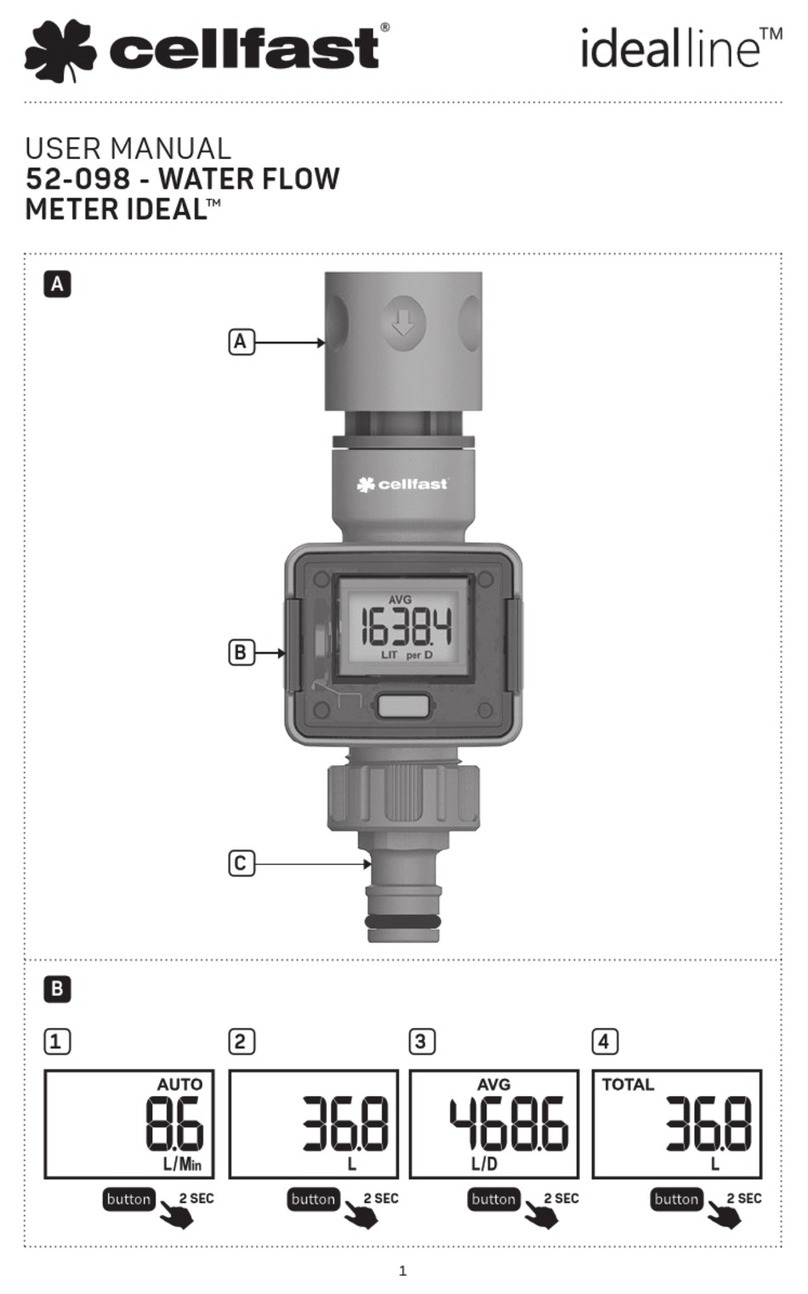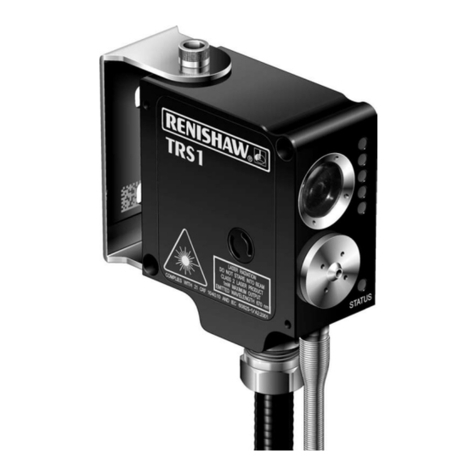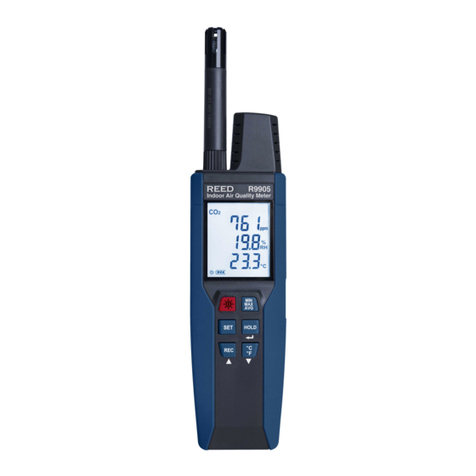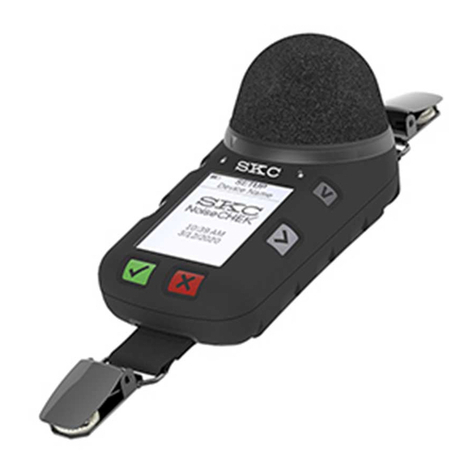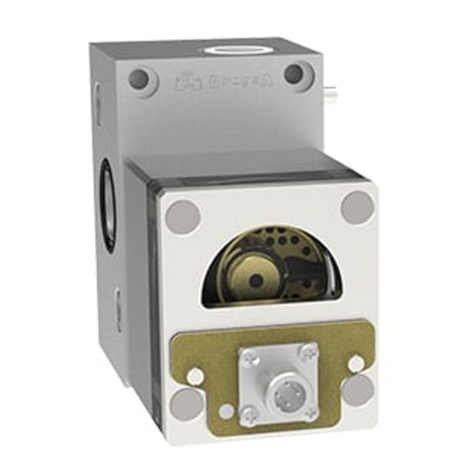ENERGY SUPPORT CORPORATION LP-30H User manual

Manual No.3022E R2
INSTRUCTION MANUAL
MODEL LP-30H
OXYGEN ANALYZER
(Probe Transmitter)
Read the operation Manual
!
ENERGY SUPPORT CORPORATION


Contents
Handling Precautions・・・・・・・ P0
1.General・・・・・・・・・・・・・・・・・・・・・・・・・・・・・・・・・・・・ P1
2.Principle of Measurement ・・・・・・・・・・・・・・・・・・・・・・・・・・・ P2
3.Components and their Functions
3-1 Probe transmitter・・・・・・・・・・・・・・・・・・・・・・・・・・・・・ P3
4.Mounting
4-1 Selection of the sampling position・・・・・・・・・・・・・・・・・・・・ P4
4-2 Selection of the mounting position of the panel・・・・・・・・・・・・・・ P4
4-3 Mounting of guide pipe・・・・・・・・・・・・・・・・・・・・・・・・・・ P5
4-4 Mounting of Probe Transmitter ・・・・・・・・・・・・・・・・・・・・・・ P7
5.Oxygen analyzer diagram・・・・・・・・・・・・・・・・・・・・・・・・・・・・ P9
6.Inspection and Maintenance
6-1 Precautions for Inspection and Maintenance・・・・・・・・・・・・・・・・ P10
6-2 Daily inspection・・・・・・・・・・・・・・・・・・・・・・・・・・・・・ P10
6-3 Calibration of indication (about once a month) ・・・・・・・・・・・・・ P11
6-4 Treatment at the stop of boiler and furnace・・・・・・・・・・・・・・・・ P11
6-5 Periodic inspection (once a year. Or according to circumstances・・・・・・ P13
6-6 About heater unit・・・・・・・・・・・・・・・・・・・・・・・・・・・・・ P13
7.Exchange (removal) of filter unit
7-1 Replacing Filter Unit・・・・・・・・・・・・・・・・・・・・・・・・・・・ P14
7-2 Sensor Unit Replacement・・・・・・・・・・・・・・・・・・・・・・・・・・ P15

- 0 -
Warning
(1) When installing wiring around the terminal section of the analyzer or performing
Maintenance inside the analyzer, take care to avoid electric shock.
Turn the power off without fail when performing maintenance of electrical parts.
(2) Be sure to connect the grounding cable to the grounding terminal to reduce the possibility
of electric shock.
The electric shock caution mark on the left is attached to the terminal area that may
cause electric shock.
When wiring or checking, be careful not to get an electric shock.
「Caution」
(1) Stop the plant when removing or installing the probe transmitter. If it is unavoidable
to remove or install the probe transmitter during plant operation, use sufficient care
for the following points.
① Wear heart resistant gloves because the installation section and its periphery are
very hot.
② Hot sample gas will blow out from a furnace at a positive pressure; never reach or
approach openings.
③ Dust in the sample gas will also blow out; wear protective glasses to protect your
eyes from dust.
④ The gas inside the furnace may blow out from piping parts of reference and calibration
gases; plug the piping ports when removing or installing the probe transmitter. After
the probe transmitter has been inserted, return the piping in its original state
promptly.
(2) Install the probe transmitter during stoppage of the plant. Turn the heater on one hour
before plant operation. If the probe is not sufficiently heated, the detector cell or
probe itself may be worn due to corrosive gases or the like.
Handling Precautions
!
!

- 1 -
1. General
The Oxygen Analyzer LP-30H is a device with a sensor (sensor cell),fitted at the tip of a
probe, heated to a high temperature by a heater, and inserted in the of a boiler or various
types of furnace, to measure automatically the oxygen partial pressure in combustion exhaust
gas. This analyzer has no gas sampling part common in old types, needs minimal maintenance,
has quick response, and is able to make stable measurement for a long time. Therefore, we
are quite confident that the LP-30H Oxygen analyzer is the most suitable instrument for
automatic control of low oxygen combustion aiming at energy conservation and NOx reduction.

- 2 -
2. Principle of Measurement
Cubic system solid solution composed of zirconia (ZrO₂) combined with calcium oxide (CaO)
and yttrium oxide (Y₂O₃)becomes solid electrolyte which conducts oxygen ion (O⁻⁻)at a high
temperature. When a couple of electrodes (Porous) are faced to this solid electrolyte, and
gases which have different oxygen partial pressure are supplied to each electrode, oxygen
ion conduction will occur and the following electromotive force between the electrodes will
generated.
(A)
Po
(S)
Po
ln
4F
RT
E
2
2
Where E :Electromotive force generated between the electrodes(V)
R :Gas constant(8.314 J・mol-1・K-1)
T :Absolute temperature of the (Normal 923・K)
F :Faraday constant(9.649×104 C・mol-1)
Po2(A) :Oxygen partial pressure in the standard gas(air)
(concentration 20.6 vol %)
Po2(S) :Oxygen partial pressure in the sample gas
(concentration is indicated by vol %)
Substituting the numerical values of constants in the above equation, we obtain.
)
E
・(S)=
Po
2
78
.
45
(log 20.6 )10( Anti
Po₂ in the sample gas can be obtained through the above equation by substituting the measure
electromotive force. This solid electrolyte (sensor cell) is fitted at the tip of the probe
transmitter of the LP-30H Oxygen Analyzer and heated to 650℃ Sample gas flows through a
special filter, diffuses and contacts with the cell, and electromotive force, corresponding
to the O₂ partial pressure in the sample gas, is generated. This electromotive force E will
be calculated through an Antilog conversion circuit in the control unit, and indicated as
a direct readable O₂ pressure (VOL%)

- 3 -
3. Components and their Functions
3-1 Probe Transmitter
Specifications
MODEL LP-30H
Measurement principle Zirconia
Response Less than 10sec.(90%F.S)
Changing the Calibration gas
Warm-up time Approx.20min.
Reference air flow rate Approx.2 /min.
Calibration gas flow rate Approx1~3 /min.
Accessories Bolt,Nut,Washer M16,L70(S38) 4
Sets Gasket(JIS10K65A T1995 t3)1
Accessories
Name Remarks Q,ty
Bolt、Nut、W、SW M16,L70(S38) 4
Non asbestos packing JIS10K65A 1
Name :LP-30H Oxygen Analyzer
Number:KS-1630□□-□
Number LSize mm
Probe transmitter 500
AKS-1630□□-□ 1000
1500
Filter Unit
KS-185496
+ - + -
C E L L K
H E A T E R

- 4 -
4. Mounting
Mounting, plumbing and wiring of LP-30H type Oxygen Analyzer will be shown.
Wrong selection of mounting place, and inappropriate mounting work will cause unexpected
trouble, deterioration in performance of the analyzer, and also damage in the equipment later,
therefore sufficient understanding of the contents of the following articles before
undertaking the work is necessary.
In a special case in which the work is difficult to do according to the following articles,
please discuss with us beforehand.
Before delivering the analyzer, the following items shall be determined or prepared.
1) Determination of the gas sampling position (mounting position of probes)
2) Determination of the mounting place of panel (control unit)
3) Determination of the plumbing and wiring routes
4) Purchase and mounting work of the guide pipes
5) Purchase of the plumbing and wiring material
4-1 Selection of the gas sampling position
Selection of the sampling point of sample gas, that is, the mounting position of the
probe transmitter should be made normally to the position where the following conditions
are satisfied.
1) Where the gas values of the sampled gas are representative values.
2) Where there is less change in oxygen concentration.
3) Where there is less change in gas pressure and temperature
4) Where the gas temperature is less than 600℃.
5) Where a uniform laminar flow of sample gas exists.
6) Where little mechanical vibration and shock exists.(Use by 0.1G or less)
7) Where maintenance work can be done easily.
8) Where outside air temperature is less than 80℃
4-2 Selection of the mounting position of the panel (control unit)
The selection of the mounting position of the panel in which the control unit
1) Where the outside air temperature is within the range of -5℃ to less than 55℃ and
the temperature change during 24 hours is less than 15℃, which preferably as little
change as possible.
2) Where little corrosive gas exists.
3) Where little mechanical vibration or shock exists.
4) Where there is not a direct stream of steam or hot air
5) Where there is, no exposure to the direct rays of the sun.
6) Where little electromagnetic induction exists.

- 5 -
7) Where the storing temperature of the standard gas cylinder is specifically less than
35℃, and there is no exposure to the direct rays of the sun and it is well ventilated.
8) Where the distance from the transmitter is shorter than 100m.
(A shorter distance is preferable to save the cost of plumbing and wiring work and
to reduce the plumbing resistance)
9) Where the door of the panel can be opened and still allow enough space for maintenance.

- 6 -
4-3 Mounting of guide pipe
Horizontal mounting (on boiler wall, etc.)
Note)・Guide pipe and steel skin of the furnace wall shall be fixed by welding the whole
periphery.
・Mounting angle of the guide pipe shall be 5~10 degrees downward to the horizontal axis.

- 7 -
Vertical mounting (on ceiling of boiler, etc.)

- 8 -
4-4 Mounting of Probe Transmitter
The probe transmitter is mounted according to the mounting drawing but the following
conditions should be observed.
「Caution」
(1) Asbestos packing (accessories) should be mounted so as not to slip out.
(2) Bolts and nuts (accessories) should be tightened uniformly so as to prevent uneven
tightening.
(3) The insertion of the probe transmitter to the guide pipe should be made slowly to
avoid shock to the probe transmitter
(especially to the tip of transmitter).
(4) When the pressure in the furnace is positive in the case of inserting the probe
transmitter, care should be paid concerning gas explosion.
And as gas explosion may occur from the plumbing holes of standard air and calibrating
gas, blinding cocks should be inserted to the holes of plumbing.
(5) Plumbing should be connected immediately after the completion of insertion of the
probe control unit.
(or the blind stopper should be installed)
Mounting method of Probe transmitter
!

- 9 -
5. Piping and wiring

- 10 -
6. Inspection and Maintenance
6-1 Precautions for inspection and maintenance
「Caution」
(1) Remove / install the probe transmitter while the plant is shut down.
If you do remove / install the probe transmitter during plant operation, please pay
attention to the following points.
① Use gloves for heat resistance, etc. because the temperature near the mounting
seat is high.
② If the furnace has a positive pressure, high temperature sample gas will be emitted,
so be sure to keep your body away from the opening.
③ Also, because dust and dirt in the sample gas spout out, wear dust-proof glasses
etc. so that dust and dirt do not get into eyes.
④ Also, there is a blowout of furnace gas from the reference air and calibration
gas piping port. Attach a closing plug to the piping port and perform removal /
installation of the probe transmitter.
(2) When removing the filter unit and sensor unit, apply anti-seizure material (Molycoat
1000, Dow Corning) to the hexagonal socket bolt.
(3) Apply a anti-seizure material (Molycoat 1000, Dow Corning) to the hexagonal bolt when
removing / mounting the probe transmitter.
(4) The sensor unit will be damaged if it falls. Pay careful attention to the handing
when replacing the sensor unit.
(5) At the time of removal / installation of the probe transmitter, please do the removal
/ installation work slowly so that shock is not applied to the probe transmitter body
(especially the tip part).
6-2 Dairy inspection
・ Check the indicated value or recorder chart.
・ Check if the reference air flow rate is about 2ℓ/min.
!

- 11 -
6-3 Calibration of indication (about once a month)
・ Carry out calibration of indication in accordance with DGO (Control Unit) Instruction
Manual, and keep a record of (K) thermo-electromotive force and cell electromotive force
and response time for ZERO gas and AIR. By this record, the frequency of sensor cell
change can be determined.
・ Measurement method of cell electromotive force and (K) thermo-electromotive force.
This measurement is made at the time of inspection and calibration of DGO (Control Unit)
Instruction Manual.
For measurement of the cell electromotive force and (K) thermo-electromotive force, a
high input impedance instrument should be employed (e.g.digital volt meter). Either
electromotive force is DC several tens mV.
Measurement method of cell electromotive force
① Flow ZERO gas (SPAN gas) about 3ℓ/min in the calibration gas circuit.
② Measure the cell electromotive force at ZERO gas (SPAN gas) at this time between No.3(+)
and No.4(-) of the receiver terminal block CELL terminal.
* The calculated output value of cell electromotive force is attached at the end of
the instruction manual, so please refer to it.
* Since the cell EMF can be lowered somewhat at the beginning of calibration gas flow,
wait for it to stabilize and measure it.
・ Thermo-electromotive (K) EMF is measured between the thermo-electromotive (K) terminals
of the receiver terminal block.
・ How to measure response time
Measures the response time when switching between zero gas and air
① Flow zero gas into the calibration gas path approximately 3/min.
② Operate the value when the indication is stable and switch from zero gas to air.
(The air flow rate at this time is also about 3/min)
③ Measure the 90% response time to the air reading from the point when the zero gas reading
starts changing at this time.
④ Next, measure the 90% response time from air to zero gas in the same way as in Section3.
⑤ 90% response time when switching the calibration gas is about 10 seconds as a standard
value regardless of the temperature difference of the calibration gas.
e.g.)0~25vol%O2Range

- 12 -
・ Standard of exchanging time of the sensor cell
The time to exchange the sensor cell is as follows.
① When the indication and calibration with the calibration gases
② When the response time becomes too much to handle in practical purpose.
For example
・ Cell electromotive force・・・When it becomes less than -30% against the calculated output
Value. (For the calculated output value, refer to the table
of cell electromotive force at the end of the instruction
Manual)
・ Response time・・・・・・・ When the calculation gas 90% response time becomes more than
30 sec at the time of the calibration gas change over
(ZERO⇄SPAN gas)
6-4 Treatment at the stop of boiler and furnace
・ In case of a short period (within 1 week)
Same as the normal operation , except that about 3ℓ/min. or air is flown continuously
in the calibration gas circuit.
(Caution) ・Do not turn off the electric power source of the O₂ analyazer.
・Please make the standard air flow about 2 / min continuously.
・Turn MEAS switch OFF.
・ In case of long period (more than 1 week and less than a month)
Follow the same procedure as above (in the case of a short time) until the atmosphere
in the flue becomes air atmosphere, but after that turn off the 0₂ meter power supply.
However, air venting to the calibration gas line and reference air should flow
continuously.
Before starting the boiler / furnace operation, turn on the O₂ meter power supply a few
hours ago.
・ In case of stopping more than 1 month due to periodic inspection and other reasons.
Same treatment as the above (in case of an extended period) but to check the probe
transmitter, draw it out after waiting until the temperature in the flue goes down to
normal temperature.
(In drawing the probe, sufficient care shall be paid in that treatment)

- 13 -
6-5 Periodic inspection(once a year, or according to circumstances)
・ Inspection and cleaning of filter unit (according to circumstances)
When the movement of O₂ indication in the recorder chart becomes dull compared with the
previous movement, it is probable that the filter unit will get clogged, so check the
filter unit.
If the amount of dust in exhaust gas is about 500mg/Nm³,it will be used continuously
for about one year Yes, but if the amount of dust is 500mg/Nm³ or more, the frequency
of inspection (replacement) is May be short
・ Cleaning of filter
The filter can be re-used through purge of compressed air or pressurized water, depending
on the adhering condition of the filter.
The following illustrate the method.
1) The purge pressure should be about 0.5kg/cm² in either method.
2) The time required to purge is about 10min.
3) When the purge is made through pressurized water, dry it sufficiently before
re-installation.
4) Where dust is accumulated, remove it with a wire brush etc.
(Note)When dust has penetrated inside the filter, and a remarkable quantity of dust
is found in the filter, the filter unit should be replaced .
Before mounting to the probe transmitter, sintering preventing agent (DOW
CORNING C.MOLYKOTE 1000)
・ Visual check of probe transmitter (once a year)
Pull out probe transmitter from the guide pipe and perform a visual inspection.
At this time, check the stage of corrosion and deformation of the probe transmitter main
body SUS part.
In particular, areas located near the furnace wall proceed with corrosion, and it is
often seen that soot etc. solidify.
Please remove those that are solidified such as soot. If the SUS part is cracked and
there is an abnormal deformation, the probe transmitter body will be replaced.
・ Insulating resistance check of the wire cable (once a year)
Check whether there is any ground or insulation loss in the wire cable.
6-6 About heater unit
Since ISOWOOL blanket is used for the heater unit of this product, the safety data sheet
of ISOWOOL blanket is attached to the product. If you lose the safety data sheet, please
contact our agent or our sales office.

- 14 -
7. Exchange (removal) of filter unit
Filter unit & sensor unit external view
・ Probe transmitter main body and filter unit are connected with screw joint.
・ Since the screw joint is tightened with a hex socket head bolt, use a hex wrench to remove
it.
7-1 Replacing Filter Unit
The filter unit consists of ④,⑤,⑥,⑦,⑧,⑨ in the figure
1) Remove hexagon socket head bolt ⑨ with hexagon wrench (for M3)
2) Remove filter fixing bracket ⑧ and filter fixing net ⑥ ceramic filter ⑤
from Pt lead ⑩
3) Remove hexagon socket head bolt ⑦ with hexagon wrench (for M5) and remove
calibration gas attachment ④
4) Install the replacement filter unit in the reverse order of 2) and 3)

- 15 -
5) Fix the unit with hexagon socket head bolt ⑨. At this time, wrap and fix the
tip of PT lead ⑩ on one of the bolts.
Probe tip external view
7-2 Sensor Unit Replacement
1) Remove the filter unit according to paragraph 1.
2) Remove sensor unit ③ and metal O-Ring ②.
3) Insert the sensor unit for replacement and metal O-Ring.
4) Fix the filter unit in the reverse order of 1).
(Note)Anti-seizure agent (Molycoat1000, Dow Corning) on the screw part.
Please apply

- 16 -
Measures when the boiler is stopped
When the boiler is stopped, if you clean the inside of the boiler, or if there
is a risk that a large amount of dust may fall during cleaning and inspection,
product the probe transmitter according to the following procedure.
(1) Turn off the O2 meter power supply.
(2) Remove the probe transmitter and terminate the wiring and piping.
(3) Bring the probe transmitter into the instrument room etc. and perform the
following maintenance.
・ Clean the outer cylinder
・ Remove the filter unit, wash the fittings with water and dry.
(The ceramic filter is replaced with a new one.)
・ Remove the detection cell unit and perform air purge to remove dirt
on the surface.
(If there is a drop in cell output or a delay in response time and it
is considered that the cell is degraded, replace the detection cell
unit.)
・ Replace the metal O-ring with a new one and assemble it.
(4) Attach a probe transmitter before boiler operation, and use it after
instructed calibration.
Dismantling method of hex. socket head bolt
(1) Remove dust around hex. socket head bolt with wire brush.
(2) Spray a small amount of CRC (oil) on the bolt hole enclosure.
(3) Insert a hexagonal rod spanner into the bolt and hit with a hammer as shown
in the figure. (lightly)
(4) Loosen the bolt。
(5) Disassemble the bolt, so that SO2
minutes and so on, after washing with hot water,
dry, then put a small amount of anti-seizure (Molycoat1000 Dow corning)and
assemble it.
Table of contents
Other ENERGY SUPPORT CORPORATION Measuring Instrument manuals
Popular Measuring Instrument manuals by other brands
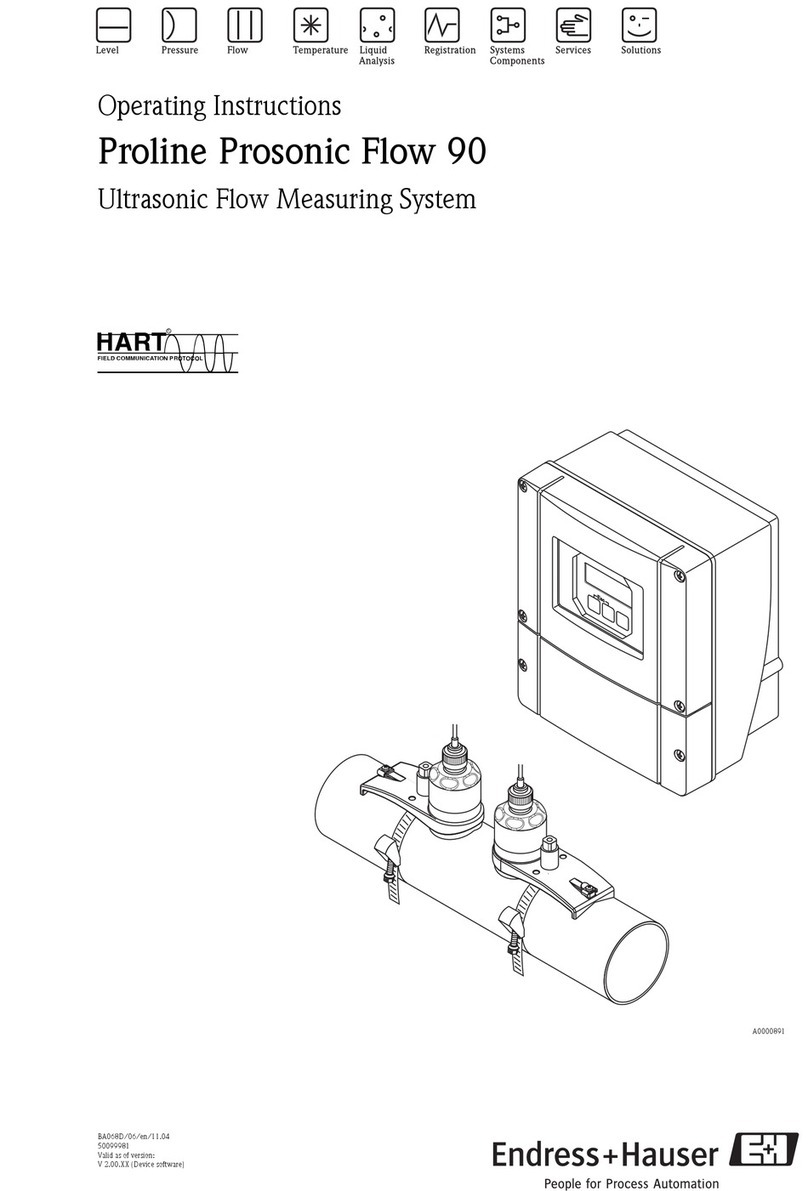
Endress+Hauser
Endress+Hauser Prosonic Flow 90 operating instructions
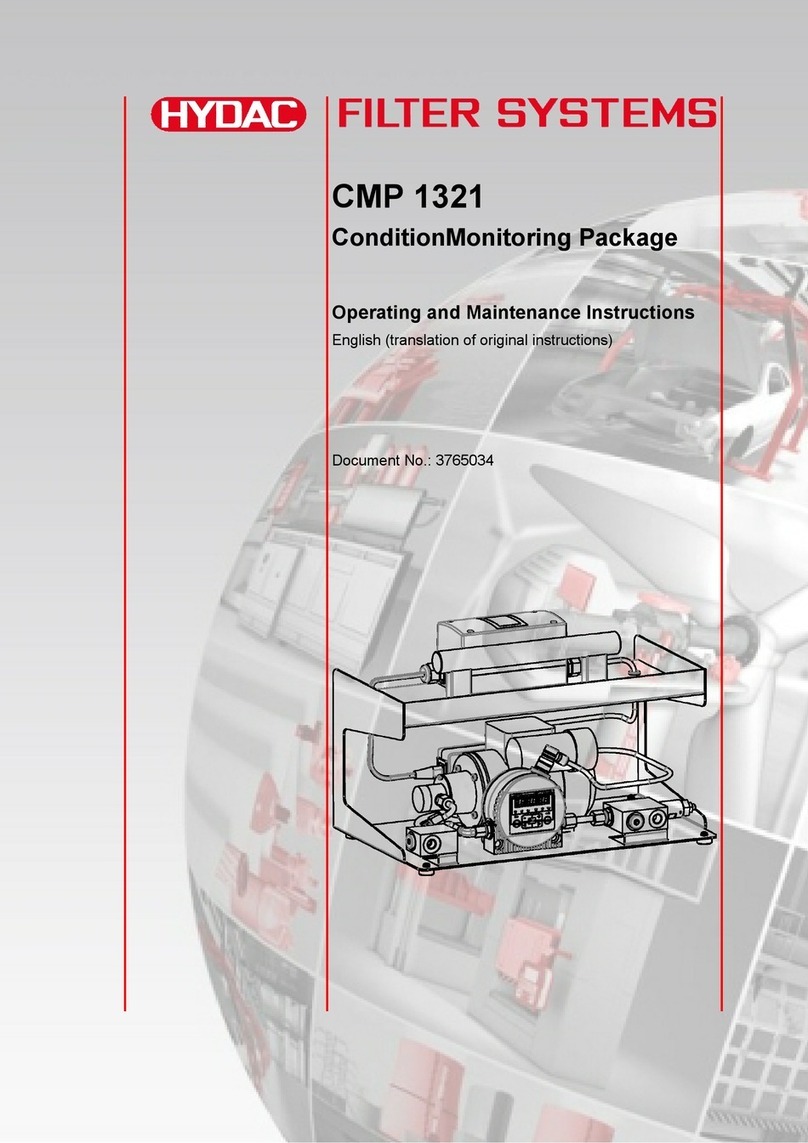
HYDAC FILTER SYSTEMS
HYDAC FILTER SYSTEMS CMP 1321 Operating and maintenance instructions
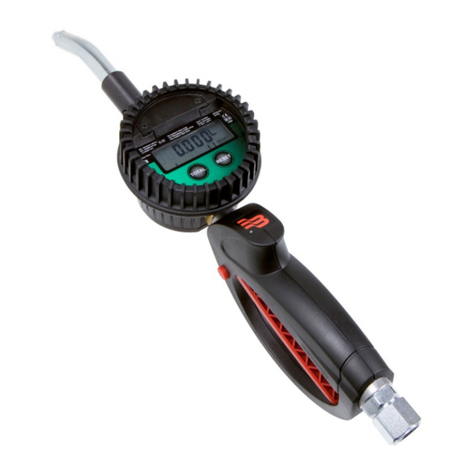
Badger Meter
Badger Meter Oval Gear LM OG-AM Series user manual

EFEN
EFEN E3-LE-03MQ CT manual

Narvitech
Narvitech NS110 quick guide

Koso
Koso TNT-05S D60 instructions
